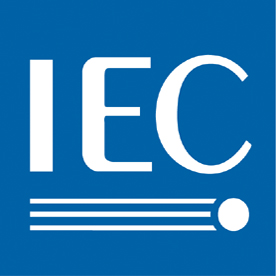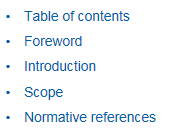ISO/IEC GUIDE 98-6:2021
Uncertainty of measurement - Part 6: Developing and using measurement models
Abstract
ISO/IEC Guide 98-6:2021 provides guidance on developing and using a measurement model and also covers the assessment of the adequacy of a measurement model. The document is of particular interest to developers of measurement procedures, working instructions and documentary standards. The model describes the relationship between the output quantity (the measurand) and the input quantities known to be involved in the measurement. The model is used to obtain a value for the measurand and an associated uncertainty. Measurement models are also used in, for example, design studies, simulation of processes, and in engineering, research and development.
This document explains how to accommodate in a measurement model the quantities involved. These quantities relate i) to the phenomenon or phenomena on which the measurement is based, that is, the measurement principle, ii) to effects arising in the specific measurement, and iii) to the interaction with the artefact or sample subject to measurement.
The guidance provided is organized in accordance with a work flow that could be contemplated when developing a measurement model from the beginning. This work flow starts with the specification of the measurand (Clause 6). Then the measurement principle is modelled (Clause 7) and an appropriate form of the model is chosen (Clause 8). The basic model thus obtained is extended by identifying (Clause 9) and adding (Clause 10) effects arising from the measurement and the artefact or sample subject to measurement. Guidance on assessing the adequacy of the resulting measurement model is given in Clause 12. The distinction between the basic model and the (complete) measurement model in the work flow should be helpful to those readers who already have a substantial part of the measurement model in place, but would like to verify that it contains all effects arising from the measurement so that it is fit for purpose.
Guidance on the assignment of probability distributions to the quantities appearing in the measurement model is given in JCGM 100:2008 and JCGM 101:2008. In Clause 11, this guidance is supplemented by describing how statistical models can be developed and used for this purpose.
When using a measurement model, numerical problems can arise including computational effects such as rounding and numerical overflow. It is demonstrated how such problems can often be alleviated by expressing a model differently so that it performs well in calculations. It is also shown how a reformulation of the model can sometimes be used to eliminate some correlation effects among the input quantities when such dependencies exist.
Examples from a number of metrology disciplines illustrate the guidance provided in this document.
This document explains how to accommodate in a measurement model the quantities involved. These quantities relate i) to the phenomenon or phenomena on which the measurement is based, that is, the measurement principle, ii) to effects arising in the specific measurement, and iii) to the interaction with the artefact or sample subject to measurement.
The guidance provided is organized in accordance with a work flow that could be contemplated when developing a measurement model from the beginning. This work flow starts with the specification of the measurand (Clause 6). Then the measurement principle is modelled (Clause 7) and an appropriate form of the model is chosen (Clause 8). The basic model thus obtained is extended by identifying (Clause 9) and adding (Clause 10) effects arising from the measurement and the artefact or sample subject to measurement. Guidance on assessing the adequacy of the resulting measurement model is given in Clause 12. The distinction between the basic model and the (complete) measurement model in the work flow should be helpful to those readers who already have a substantial part of the measurement model in place, but would like to verify that it contains all effects arising from the measurement so that it is fit for purpose.
Guidance on the assignment of probability distributions to the quantities appearing in the measurement model is given in JCGM 100:2008 and JCGM 101:2008. In Clause 11, this guidance is supplemented by describing how statistical models can be developed and used for this purpose.
When using a measurement model, numerical problems can arise including computational effects such as rounding and numerical overflow. It is demonstrated how such problems can often be alleviated by expressing a model differently so that it performs well in calculations. It is also shown how a reformulation of the model can sometimes be used to eliminate some correlation effects among the input quantities when such dependencies exist.
Examples from a number of metrology disciplines illustrate the guidance provided in this document.
Additional information
| Publication type | Guide |
|---|---|
| Publication date | 2021-02-09 |
| Edition | 1.0 |
| Available language(s) | English |
| TC/SC | SMB - Standardization Management Boardrss |
| ICS | 17.020 - Metrology and measurement in general |
| Pages | 96 |
| File size | 2934 KB |
The following test report forms are related:
Share your publications
Learn how to share your publications with your colleagues, using networking options.
Payment information
Our prices are in Swiss francs (CHF). We accept all major credit cards (American Express, Mastercard and Visa, JCB and CUP), PayPal and bank transfers as form of payment.
Keep in touch
Keep up to date with new publication releases and announcements with our free IEC Just Published email newsletter.
Contact customer services
Please send your enquiry by email or call us on +41 22 919 02 11 between 09:00 – 16:00 CET Monday to Friday.

